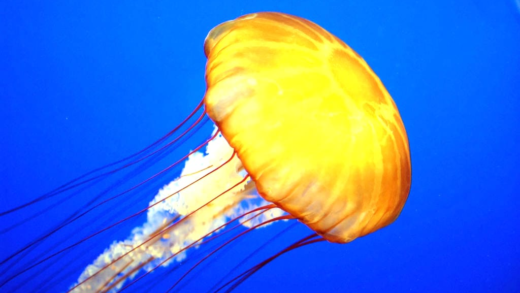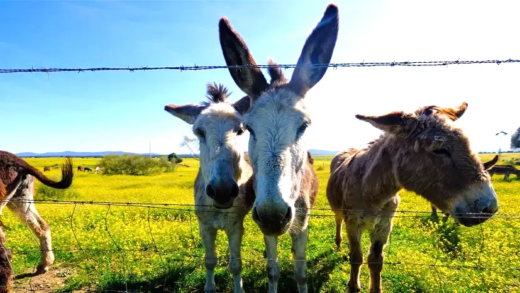Volcanoes, categorized into shield, stratovolcanoes, and cinder cones, erupt due to magma rise influenced by tectonic plate movements. Monitoring techniques are vital for predicting eruptions and understanding their environmental impacts, including landscape changes.
Types of Volcanoes
Types of volcanoes are diverse and fascinating. Each type has unique characteristics that define its shape, eruption style, and formation process. The three main types of volcanoes are shield volcanoes, stratovolcanoes, and cinder cones.
1. Shield Volcanoes
Shield volcanoes are broad, gently sloping landforms. They are primarily built up by the flow of low-viscosity lava that can travel long distances. This type of volcano is known for its effusive eruptions, which are less explosive and typically produce lava flows rather than ash. A well-known example is Mauna Loa in Hawaii, which is one of the largest shield volcanoes on Earth.
2. Stratovolcanoes
Stratovolcanoes, also known as composite volcanoes, are characterized by their steep, conical shape. They are formed from alternating layers of lava flow, ash, and volcanic rocks. This type of volcano often experiences explosive eruptions due to the viscous magma that can trap gases. Mount St. Helens in the United States is a classic example, having erupted dramatically in 1980, showcasing the explosive nature of stratovolcanoes.
3. Cinder Cones
Cinder cones are the smallest type of volcano. They are formed from the accumulation of volcanic debris, such as ash and small rocks, ejected during eruptions. These eruptions are usually short-lived and result in the creation of a steep, conical hill. An example is Paricutin in Mexico, which emerged suddenly in a farmer’s field in 1943 and grew rapidly.
In summary, understanding the types of volcanoes helps us appreciate the complexity and beauty of volcanic landscapes. Each type has its own formation process and eruption style, contributing to the dynamic nature of our planet. Monitoring these volcanoes is crucial for predicting eruptions and understanding their potential effects on the environment.
How Volcanoes Erupt
Understanding how volcanoes erupt is crucial to grasping their impact on our planet. When we talk about how volcanoes erupt, we’re diving into the fascinating world of magma rise and volcanic activity. The process begins deep within the Earth, where intense heat causes rocks to melt and form magma.
1. Causes of Magma Rise
The ascent of magma towards the surface is primarily driven by two factors: pressure and buoyancy. As magma forms, it creates pressure that forces it upwards through cracks and fissures in the Earth’s crust. Buoyancy plays a key role as well; magma is less dense than the surrounding solid rock, which makes it rise. This upward movement can lead to the accumulation of magma in underground reservoirs, known as magma chambers.
2. Eruption Mechanisms
Volcanic eruptions can be categorized into two main types: explosive and effusive eruptions. Explosive eruptions occur when pressure builds up from gases trapped within the magma. When this pressure is released, it can result in a violent explosion, ejecting ash and volcanic rocks into the atmosphere. An example of this is Mount St. Helens, which experienced a catastrophic eruption in 1980.
Effusive eruptions, on the other hand, are characterized by the gentle flow of lava. They typically occur when the magma is low in viscosity, allowing it to flow easily from the vent. Shield volcanoes, like Mauna Loa, are prime examples of this type of eruption, where lava flows gradually build up the volcano’s broad shape.
3. Monitoring Volcanoes
Monitoring volcanoes for eruptions is essential for public safety. Scientists use various techniques, such as seismographs to detect earthquakes, gas emissions analysis, and satellite imagery to observe changes in the volcano’s shape. This data helps predict eruptions and assess potential impacts on the surrounding environment.
In conclusion, the process of how volcanoes erupt is complex and influenced by multiple factors. Understanding these mechanisms not only helps us appreciate the power of nature but also highlights the importance of monitoring volcanic activity to mitigate potential hazards.
Tectonic Plates and Volcanic Activity
Tectonic plates play a crucial role in the formation and eruption of volcanoes. These massive sections of the Earth’s crust constantly move, leading to various geological phenomena, including volcanic activity. Understanding how tectonic plates interact can help us comprehend why certain areas are more prone to eruptions than others.
1. Tectonic Plate Interactions
There are three main types of plate boundaries that contribute to volcanic activity:
- Divergent Boundaries: At these boundaries, plates move apart, allowing magma to rise and create new crust. This is often seen at mid-ocean ridges, where underwater volcanoes form.
- Convergent Boundaries: Here, one plate is forced beneath another in a process called subduction. This leads to the formation of stratovolcanoes, as seen in the Pacific Ring of Fire.
- Transform Boundaries: Although not directly causing eruptions, these boundaries can lead to earthquakes that may trigger volcanic activity nearby.
2. Landscape Changes After Eruptions
The effects of volcanic eruptions on the landscape can be dramatic. After an eruption, the terrain may undergo significant transformations:
- Creation of New Landforms: Eruptions can build new mountains or islands, as lava cools and solidifies.
- Soil Enrichment: Volcanic ash is rich in minerals, enhancing soil fertility, which can benefit agriculture in the long term.
- Destruction of Existing Ecosystems: While new landforms are created, existing habitats may be destroyed, leading to loss of biodiversity.
- Changes in Water Flow: Lava flows can alter rivers and lakes, impacting local water systems and ecosystems.
In summary, tectonic plates not only influence where volcanoes form but also how they erupt. Monitoring these geological processes is essential for understanding potential hazards and preparing for future eruptions.





Comments are closed.